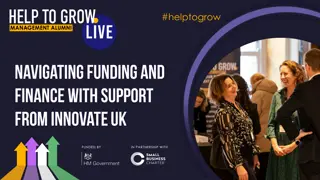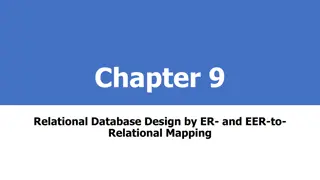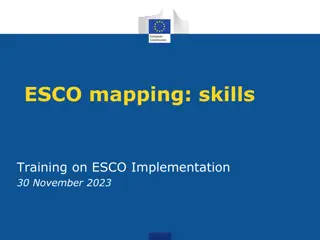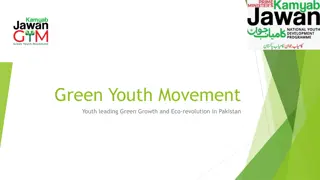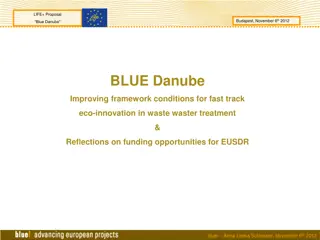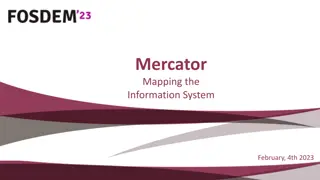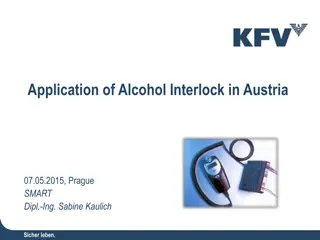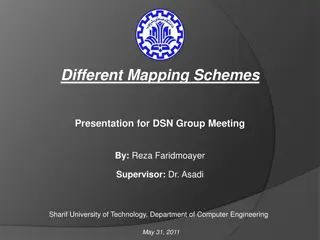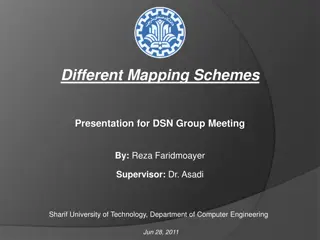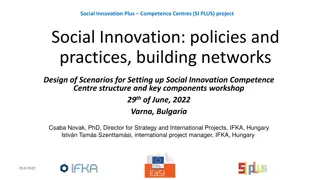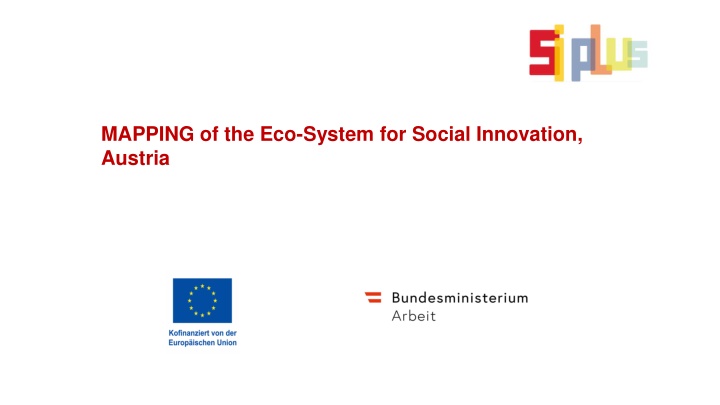
Mapping Eco-System for Social Innovation in Austria
This content explores the eco-system for social innovation in Austria, focusing on dimensions like novelty, social needs, societal challenges, and cooperation among stakeholders. It also discusses the characteristics, role of target groups, and political frameworks related to social innovation initiatives in the country, along with funding structures.
Download Presentation

Please find below an Image/Link to download the presentation.
The content on the website is provided AS IS for your information and personal use only. It may not be sold, licensed, or shared on other websites without obtaining consent from the author. If you encounter any issues during the download, it is possible that the publisher has removed the file from their server.
You are allowed to download the files provided on this website for personal or commercial use, subject to the condition that they are used lawfully. All files are the property of their respective owners.
The content on the website is provided AS IS for your information and personal use only. It may not be sold, licensed, or shared on other websites without obtaining consent from the author.
E N D
Presentation Transcript
SI What does it mean? AIM: A common understanding (base: Definition ESF-Regulation) Dimensions for Operationalisation: Novelty Social needs and societal challenges Approach and methods (focus on cooperation and participation) Aims and intensions
Characteristics ofSI Social innovation can also include projects/initiatives on a local level and does not necessarily have to claim to have a supra- regional impact. 84% 15% Social innovation must contribute to the improved participation of those groups that are restricted in their scope of action (keyword: "empowerment") 59% 32% 8% Social innovation must promote cooperation between civil society stakeholders and administrative authorities 34% 43% 17% 6% Social innovative projects must follow a bottom-up approach, i.e. changes are initiated by those affected. 23% 49% 23% 5% Measures and projects initiated by the government or a public authority can be compatible with the principles of social innovation as well ("top-down") 23% 50% 23% 0% 10% 20% 30% 40% 50% 60% 70% 80% 90% 100% Strongly agree Rather agree Rather disagree Strongly disagree
Role of the Target Group The target group(s) must be actively involved in the implementation. 64% 31% 4% The target group(s) must be actively involved already during the conception stage. 41% 44% 14% The initiative for the project must derive from the target group. 6% 27% 46% 22% 0% 10% 20% 30% 40% 50% 60% 70% 80% 90% 100% Strongly agree Rather agree Rather disagree Strongly disagree
Political Framework National level - government programme (2020-2024): Just one mention (tax benefit for non profit-organisation and check of further funding of social innovation; Promotion of innovative projects in the field of soical enterprises and participation Regional level: Just in two regions explicit reference to SI; K rnten: Necessity of technological and social innovation Vienna: Smart-City-Concept and the necessity of social innovation BUT: Open Innovation Strategy for Austria including social innovation with the aim to implement an open innovation platform for Social Innovation
Funding Structures ESF+ SI as cross-cutting issue and as an own priority axe ESF 14-20: no systematic embedding of SI, but an emphasis in priority equality between women and men as well as social inclusion scaling-strategy ELER/LEADER: Local Action Groups/Local Development Strategies on bottom-up approaches Development and expansion of important functions and structures for the common good (in the area of services, local supply, regional learning and participatory culture) More than 800 projects since 2007 EFRE/INTERREG IWB/EFRE no emphasis on SI INTERREG social innovation not in each OP explicitly mentioned, but innovation a MUST a lot of projects (without nearly any connex to ESF or LEADER) many projects, but no
National Fundings some examples SozialMarie: The first price for Social Innovation in Europe (2004): Each year 15 projects are awarded (financed by different private foundations, like ESSL Foundation) Ministry for Social Affairs: Social Impact Bond and aws - Social Business Call Some regional initiatives, e.g. Social Innovation Vienna Social Projects with emphasis on neighbourly help Austrian Research Promotion Agency (FFG): Social Crowdfunding Lighthouses for resilient cities in 2040 Innovation.Rooms
Relevant Stakeholders Source: L&R Datafile 'Survey: Social Innovation in Austria', 2021 n=346 nmiss= 66; Question: Which actors provide the most important impetus for social innovation?
Projects: Focus of Action Vocational orientation/ qualification/ coaching Consulting/Support Employment project Inclusion/ non-discrimination Sustainability/CO2-reduction Communication / Participation / Housing Neighborhood/citizen participation 67 59 39 24 17 17 12 7 5 5 4 27 283 24% 21% 14% 8% 6% 6% 4% 2% 2% 2% 1% 10% 100% Digital skills Healthcare Social Entrepeneurship Development/Research Other Total Source: L&R Datafile 'Survey: Social Innovation in Austria', 2021 n=346
Examples for projects I (voc.orientation / qual.) Habibi und Hawara private and independent training and integration program for people with a refugee or migration background (5 restaurants) Discovering Hands Early detection of breast cancer; new work area and job description for blind and visually impaired people AUFLEB Training, upgrading and placement of unemployed people
Examples for projects II (consulting/ support) Neunerhaus - Mental health offer A new service for homeless and uninsured people responds to the rise in mental stress Specialisterne Specialisterne Academy prepares people on the autism spectrum for their career path. Support in career orientation, development of individual strengths Silver Girls This education and counseling program aims at women from middle age who want to change careers or reorient themselves
Examples for projects II (employment projects) Heidenspass Low-threshold employment for young people: Upcycling social project, development and sale of products from used materials Chancenforum autArK Employment project for people with disabilities Vollpension generation caf in Vienna, baking academy, older (retired) women bake and work in the cafe, they have additional income opportunities
Examples for projects: Others Climatubers Participatory video and digital storytelling to address climate-related inequalities, digital technologies to be connected to social action SILC - Social Innovation Lab Carinthia / Social Innovation Vienna Ideas competition, for innovative solutions with sustainable impact Plaudertischerl project of the Diakonie, the table is marked in the participating restaurants with a sign and you can simply sit at this table and communicate with others
Many thanks for your attention! www.siplus.at

